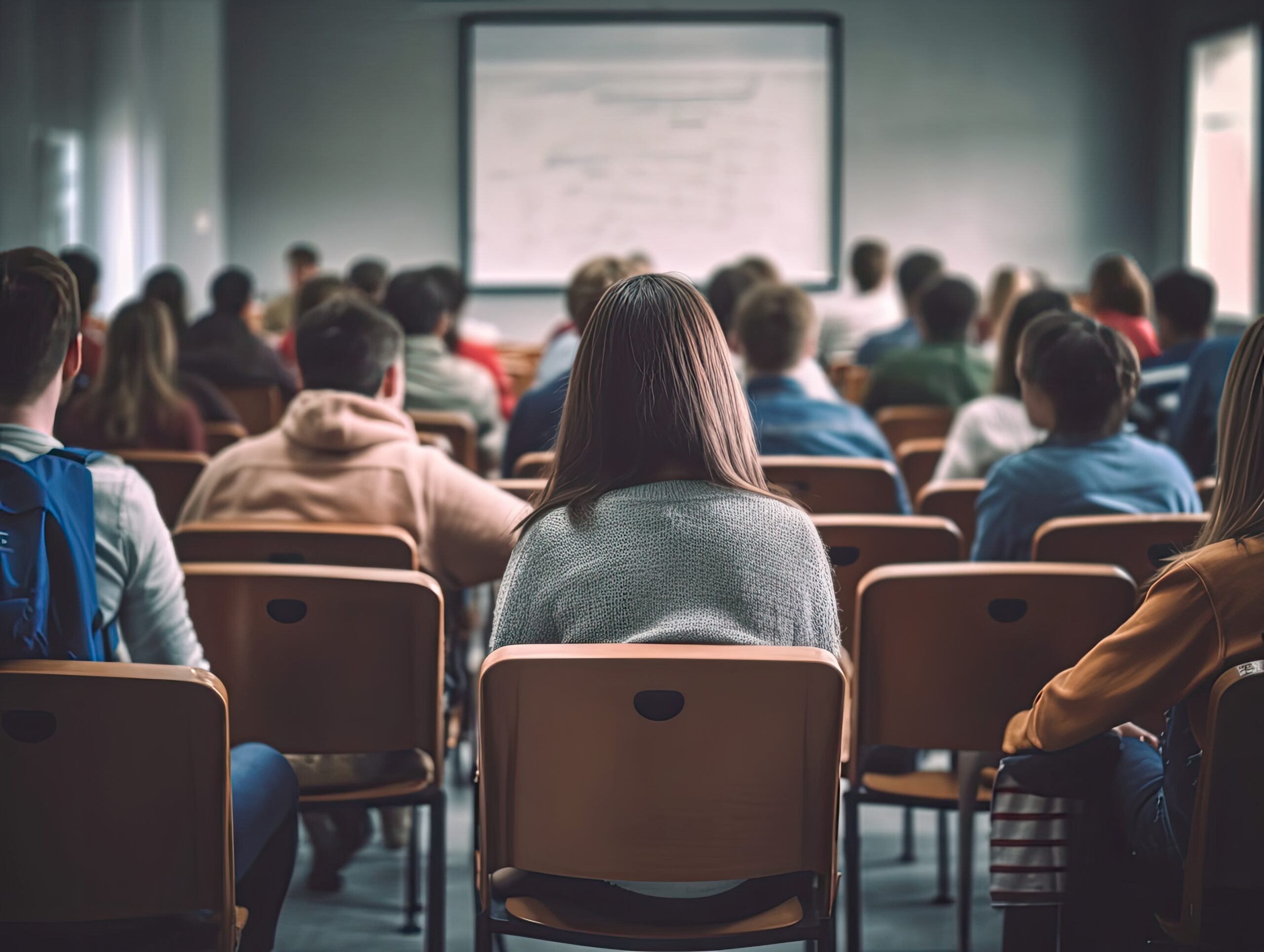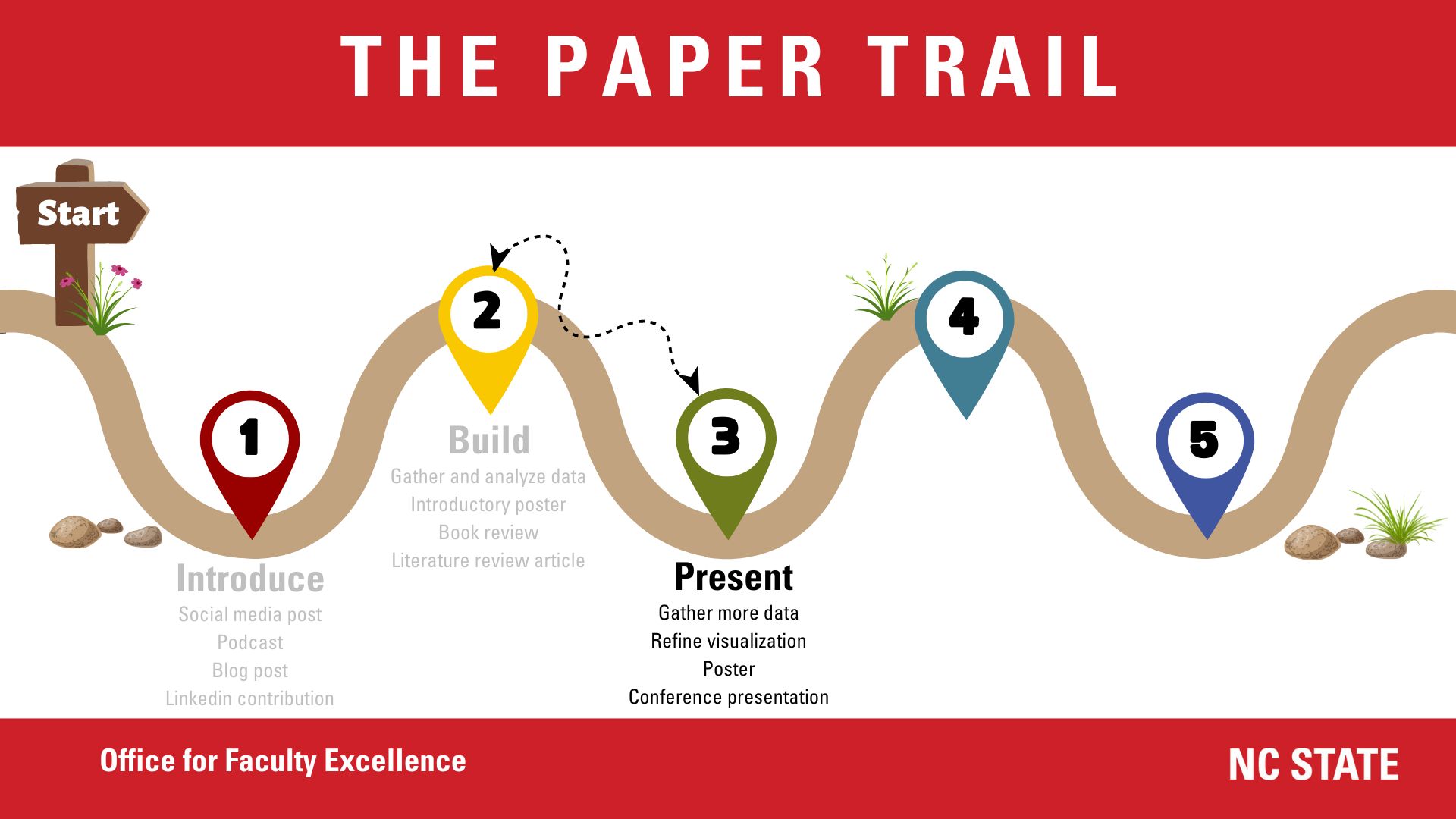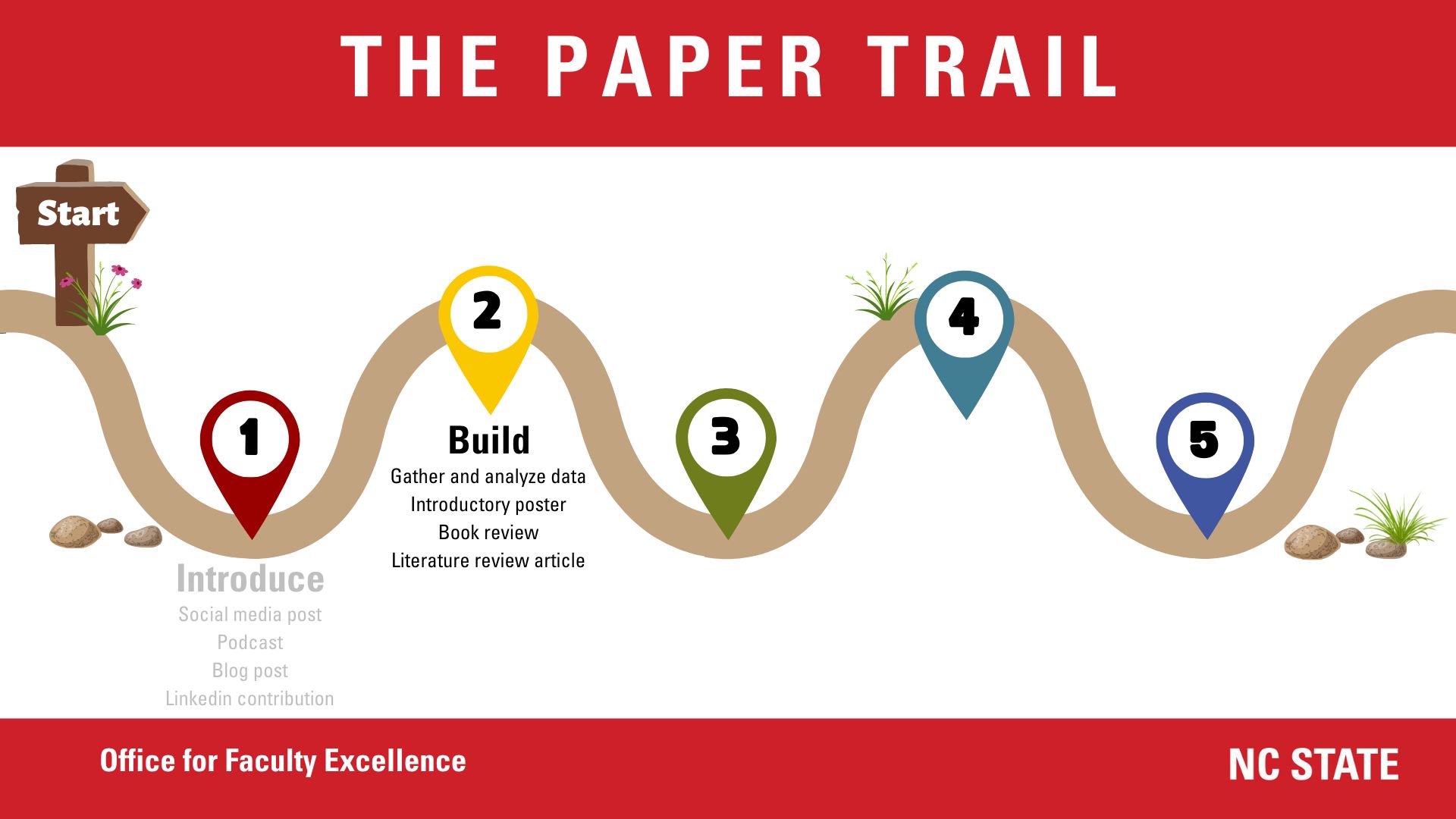Tackling Tough Topics in Classes: From Confrontation to Conversation
by Maria Gallardo-Williams and Roy Schwartzman

The ongoing and escalating human tragedy in the Middle East reminds us of the urgent need to address controversies through constructive communication. Traumatic and violent events can trigger intensely emotional conversations that can escalate into frustrating conflicts. Let’s explore how to transmute confrontations into constructive conversations that provide new opportunities to learn.
Navigating the complexities of classroom discussions on sensitive and contentious topics demands a thoughtful and strategic approach. Teaching controversial subjects is an inescapable reality across various courses and disciplines. Whether it’s the intricacies of personal identities, group affiliations, or creeds, such subjects have a way of permeating many academic arenas. Even within seemingly unrelated courses, unfolding current events can provoke tense interactions. The crucial question that arises is how we, as educators, choose to manage these discussions. This blog post delves into a plethora of suggestions (applicable to online or in-person formats), with a primary focus on pre-planned discussions, but the versatile techniques discussed can just as effectively be applied to those spontaneous, unanticipated moments of discourse.
Before Class
To effectively manage difficult classroom discussions, it’s essential to proactively consider their connection to your subject area and course learning objectives. Before your course commences, take time to identify potential controversial topics within your subject area, bearing in mind that what may be perceived as contentious can vary among students. These “hot button” topics encompass a wide range of subjects, including religion, race, gender, sexuality, genetic testing, evolution, immigration, and more. Recognizing these potential sources of controversy in advance can help you prepare for meaningful dialogues.
Once you’ve identified these contentious subjects, reflect on how they can contribute to, rather than detract from, your overarching course learning goals. Consider whether your goals involve fostering critical thinking, encouraging diverse perspectives, and promoting respectful discourse across differences. Difficult discussions can be an opportunity to nurture these skills in your students. If you’re uncertain about the connection between these conversations and your learning objectives, drawing inspiration from your peers’ experiences can offer valuable insights.
Sometimes flashpoints arise spontaneously with one or more students vociferously advocating a controversial opinion that incites antagonistic responses. To prevent the conflict from escalating and move toward constructive outcomes, first acknowledge that those involved in the conversation have strong feelings and opinions. Self-expression can be cathartic, but it can derail the class if not managed well. To provide all students an opportunity to express their opinions, try a 1-2 minute “instant reflection” writing task whereby students simply write what they think and feel about the issue at hand and why. The “why” component helps move toward uncovering the basis for opinions and beliefs. Students turn in these written statements to the instructor–no one else reads them. These instant reflections can provide starting points for more structured discussion in a later class session or in an appropriate online forum.
If discussion becomes acrimonious, try borrowing a technique from conflict transformation. Ask each disputant to summarize the other person’s position and rationale. After they are satisfied with the other person’ summary, ask them to identify some shared values that they can agree on. Next, ask them to discuss how they can begin imagining how they can collaborate in upholding those values. Although disagreement may persist, the discussion becomes less adversarial because it proceeds from common ground.
To set the tone for your classroom environment, consider explicitly addressing the role of difficult dialogues in your syllabus. This early communication signals to your students that controversial topics are not to be feared but can serve as a platform for learning and personal growth from the very beginning of the course. You may also find it useful to establish ground rules for discussing difficult or sensitive topics, such as these campus-community conversation guidelines developed by the National Communication Association Center for Communication, Community Collaboration, and Change.
During Class
To effectively navigate difficult classroom discussions, it’s crucial to establish a structured framework for conversation. Begin by preparing thought-provoking questions that initiate dialogue while maintaining a balance between focus and openness in responses. Avoid questions with a single right answer and, in some instances, encourage students to share opinions they’ve heard about the topic. This approach helps gauge the diverse perspectives without putting individuals on the spot. Structured discussion activities, such as those offered by Vanderbilt University, can provide valuable guidance for fostering productive and supportive conversations.
Active management of the discussion is paramount. Be prepared to prompt students for follow-up, ask for additional explanations or evidence, and remind them of the discussion guidelines. Ensure that the conversation aligns with the stated goals, and if hesitancy or discomfort arises, address it openly. Consider asking why the topic is challenging to discuss and reaffirm the course or disciplinary framework that supports the conversation. Your willingness to admit your own discomfort can make students more at ease with their own reservations, especially if you demonstrate how to work through them.
Also, create structured opportunities for reflection and input. Encourage moments for everyone to pause, think, and reflect, particularly when the conversation loses momentum or becomes contentious. Incorporate short writing breaks to diffuse tension and refocus the discussion, allowing students to engage more thoughtfully with the challenging subject matter.
In the event of a heated moment unfolding in the classroom, it’s beneficial to suggest a brief break during which everyone can take a moment to jot down their thoughts and emotions related to the ongoing conversation. This pause enables emotions to settle, fostering an environment of respect and constructive dialogue.
Confronting inappropriate language in the classroom is essential. When a student makes an inappropriate comment, whether it’s racist, sexist, or otherwise offensive, ignoring it can inadvertently signal approval of such views. Allowing such remarks to go unchallenged can erode students’ trust in you and their sense of belonging in the class and the university. It’s crucial to have prepared responses for addressing these comments, including language that interrupts bias by addressing the behavior while also engaging with the person responsible. It is important to remember that our discomfort as instructors is outweighed by the discomfort experienced by marginalized students.
After Class
Dedicate time at the conclusion of your class to encourage students to synthesize what they’ve learned, especially in relation to the course concepts and the activity’s objectives. Alternatively, consider assigning a follow-up task outside of class for students to reflect and synthesize their thoughts, aiding their own understanding while allowing you to assess the activity’s effectiveness. This step serves to help students process any cognitive or emotional dissonance they may have encountered during the discussion.
Engage students in a reflection on how they would have liked the discussion to unfold differently, whether in terms of group behavior or their own participation. Remind them of any established frameworks or guidelines to structure their reflections. In certain situations, offering the group a second opportunity for discussion may be worthwhile.
Ensure that students are aware of available campus resources if they require support in processing challenging discussions or need emotional and psychological assistance. This step underscores your commitment to their well-being and encourages them to seek help when needed.
A Structured Approach
Here are things to consider if you anticipate or encounter a difficult conversation in your classroom:
Identify Potential Issues
- Relevant to Course Content: Which topics in the course tend to be the most controversial? What is the root of the controversies? What perspectives could students add?
- Current Events Beyond the Course: What current events are generating intense reactions? How do these events affect students in your course? What emotions might students be harboring about these events?
Align with Learning Goals
Determine how these discussions align with your course’s learning objectives, if possible.
- What should students be learning about the topic being discussed?
- What should students learn about constructing arguments, articulating positions, and using evidence?
- What should students learn about how to address people with different viewpoints?
- How can students develop their presentational skills to become more effective advocates?
Set Discussion Guidelines
- How have you structured time limits equitably so everyone can participate?
- How thoroughly are students taking different sides on an issue sharing their information as they prepare?
- What measures are you taking to encourage active listening and careful attention to accurately understanding alternative positions? (One excellent stimulus for good listening is to have students turn in their notes on each other’s presentations or positions.)
- What role does research play in the discussion? What provisions have you made for fact checking and verification of claims?
- What ethical ground rules guide the discussion? How will these rules be enforced?
- What (if any) process will there be for students to ask and answer questions from classmates?
- Which components of the discussion could be conducted online?
Observe the Conversation
- Actively monitor the conversation to quickly correct inappropriate or offensive language/behavior. Address problematic comments promptly, interrupting bias while calling in the person responsible. Have you considered what you will say to students who act inappropriately?
- Be prepared to offer encouragement or ask stimulus questions to help students who get stuck or are reluctant to contribute.
- Immediately address violations of rules (e.g., halting a speaker who runs overtime).
- Have you prepared some deliberately provocative points to reinvigorate discussion if participation lags?
Provide Structured Opportunities for Reflection
- How will you evaluate or have students evaluate (via peer or self-evaluation):
- Clarity and reasonability (logic) of arguments?
- Use of evidence, including consideration of bias, source trustworthiness, and recency?
- Organization of ideas?
- Adaptation to audience (i.e., how well they relate to listeers or to a hypothetical audience)?
- Delivery factors (tone, volume, articulation, rate, etc.)?
- How will you help students prioritize areas for improvement?
Synthesize and Reflect
- How will students synthesize what they’ve learned and reflect on the discussion?
- How might you recruit students to facilitate future discussions?
Share Relevant Resources
Gather and distribute information on available resources for students needing emotional or psychological support.
- What campus offices (police, student health services, etc.) might be helpful?
- What campus organizations could provide further information or support related to the topic discussed?
- What community organizations can provide further information or support?
Assess and Adapt
- How effective was your approach? What adjustments will you make for future discussions?
- What formal feedback did you collect from students after the discussion? How will you incorporate their feedback into other discussions?
Additional Resources
Discussion as a Way of Teaching: Tools and Techniques for Democratic Classrooms (2nd edition) by Stephen D. Brookfield and Stephen Preskill. San Francisco: Jossey-Bass, 2005. (Available in the Vanderbilt CFT library)
How to Talk About Hot Topics on Campus: From Polarization to Moral Conversation by Robert J. Nash, DeMetha LaSha Bradley, & Arthur W. Chickering. San Francisco: Jossey-Bass, 2008. (Available in the Vanderbilt CFT library)
Managing Hot Moments in the Classroom From the Derek Bok Center for Teaching and Learning at Harvard University.


